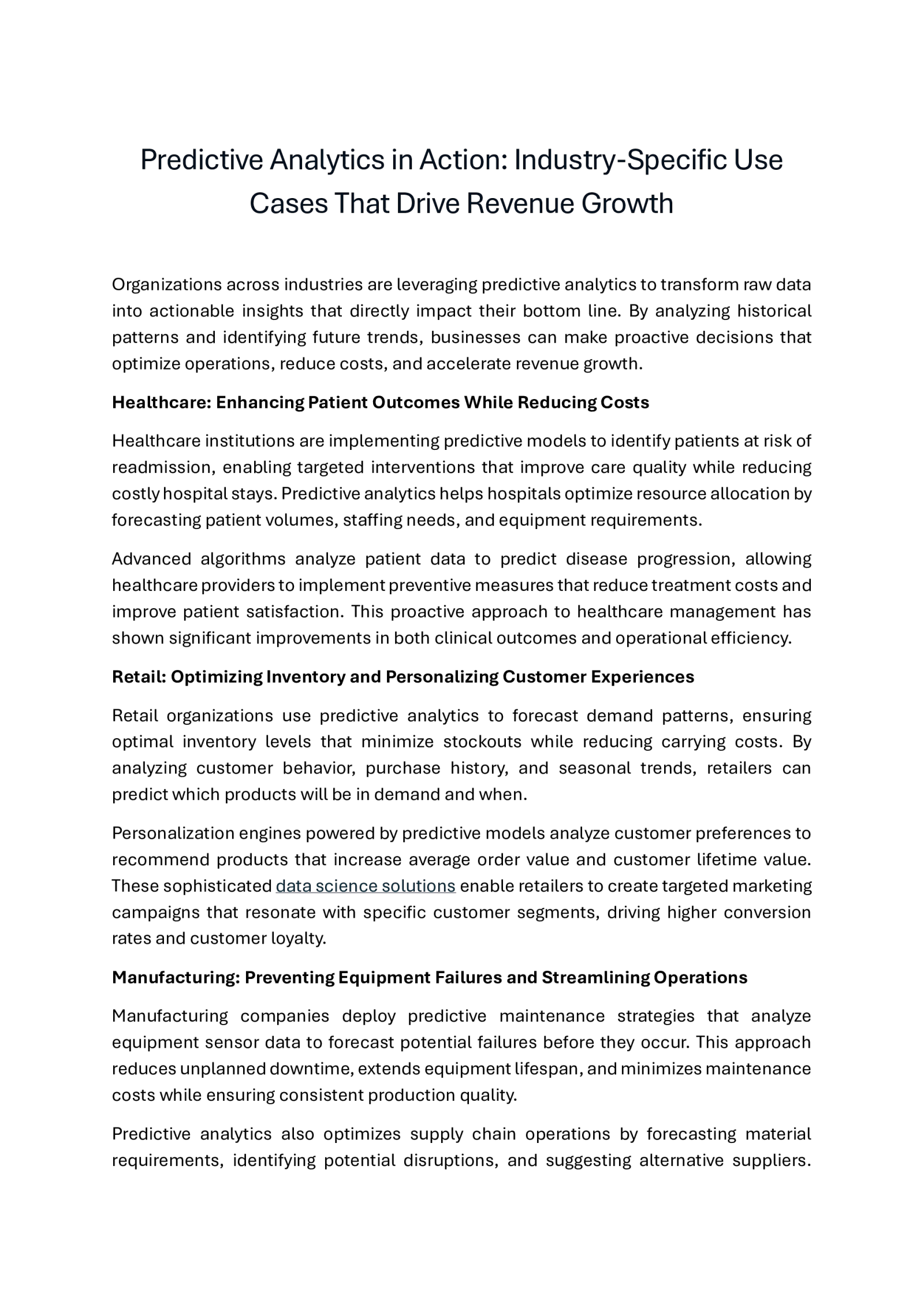Predictive Analytics in Action: Industry-Specific Use Cases That Drive Revenue Growth Organizations across industries are leveraging predictive analytics to transform raw data into actionable insights that directly impact their bottom line. By analyzing historical patterns and identifying future trends, businesses can make proactive decisions that optimize operations, reduce costs, and accelerate revenue growth. Healthcare: Enhancing Patient Outcomes While Reducing Costs Healthcare institutions are implementing predictive models to identify patients at risk of readmission, enabling targeted interventions that improve care quality while reducing costly hospital stays. Predictive analytics helps hospitals optimize resource allocation by forecasting patient volumes, staffing needs, and equipment requirements. Advanced algorithms analyze patient data to predict disease progression, allowing healthcare providers to implement preventive measures that reduce treatment costs and improve patient satisfaction. This proactive approach to healthcare management has shown significant improvements in both clinical outcomes and operational efficiency. Retail: Optimizing Inventory and Personalizing Customer Experiences Retail organizations use predictive analytics to forecast demand patterns, ensuring optimal inventory levels that minimize stockouts while reducing carrying costs. By analyzing customer behavior, purchase history, and seasonal trends, retailers can predict which products will be in demand and when. Personalization engines powered by predictive models analyze customer preferences to recommend products that increase average order value and customer lifetime value. These sophisticated data science solutions enable retailers to create targeted marketing campaigns that resonate with specific customer segments, driving higher conversion rates and customer loyalty. Manufacturing: Preventing Equipment Failures and Streamlining Operations Manufacturing companies deploy predictive maintenance strategies that analyze equipment sensor data to forecast potential failures before they occur. This approach reduces unplanned downtime, extends equipment lifespan, and minimizes maintenance costs while ensuring consistent production quality. Predictive analytics also optimizes supply chain operations by forecasting material requirements, identifying potential disruptions, and suggesting alternative suppliers.

